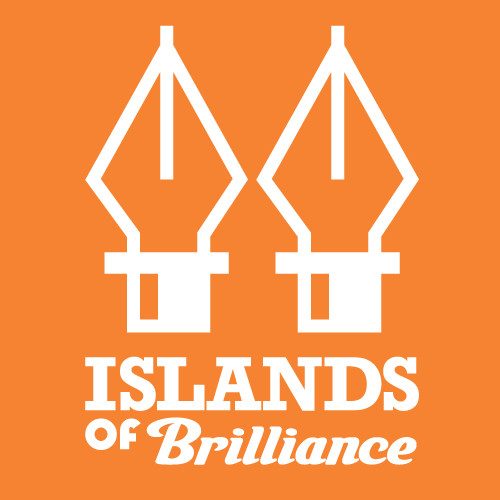Adobeland: Creative Thinking at IOB Digital Academy
Sometimes, you find answers to tough questions, and sometimes you realize you're already figuring them out on your own. A couple of weeks ago, I visited Adobe’s world headquarters. As an Adobe Creative Education Leader, I was there with an inspiring group of creative educators, librarians, tech coaches, and more. We gathered to learn from each other and help the next generation become lifelong creators.
A Keynote That Inspired Tough Questions
Adobe’s Director of Education & Advocacy, Brian Johnsrud, delivered a compelling keynote on day one. He shared research that illuminated what we should strive for at Islands of Brilliance (IOB). His talk sparked a tough question in my mind—more on that later!
Brian’s presentation was engaging, with visually striking slides. I was particularly drawn to the small references sprinkled throughout the slides. Curious, I looked up some of the sources, including the World Economic Forum’s (WEF) 2023 job report.





IOB’s Approach to Learning
Before diving into that, let me share a bit about my work as the Director of Technology at IOB. I supervise the creative technology team, where we empower our learners to drive their own experiences. They get to choose what they want to learn and how deeply they want to explore it. My role is to build confidence in our team so they can effectively support our learners.
At IOB, we focus on each learner’s Special Interest (SpIn) to make learning engaging and exciting. In our Digital Academy, we utilize self-determined learning (Quest), challenge-based learning (SideQuest), and project-based learning (CollabQuest). These programs foster a thriving learning community.
I often say, “Creativity is at the heart of everything we do,” but now I realize, “Creative thinking is at the heart of all our efforts.”
The Future of Work: Creative Thinking at Its Core
The World Economic Forum jobs report highlights the skills necessary for future success, and it's gratifying to see that IOB is already emphasizing most of these skills.
What is Creative Thinking?
The WEF defines creative thinking as approaching problems in new and innovative ways—coming up with original ideas and practical solutions. Creative thinking involves:
Imagination and Originality: Thinking beyond the usual boundaries.
Problem-Solving Skills: Using creativity to tackle challenges.
Adaptability: Being open to new approaches.
Critical Thinking: Analyzing and evaluating ideas to ensure they work.
Creative thinking is crucial for the future workforce, enabling us to innovate and adapt in a fast-changing world.
At IOB, we understand that curiosity is a driving force behind exploration. Our learners’ SpIns unlock creativity and curiosity, helping them develop lifelong learning habits.
Creativity in Action at the Digital Academy
DA Quest Participant, Drew, created this playable video game for PlayStation.
In the Digital Academy, creativity and curiosity are the bedrock of lifelong learning, equipping our learners with the tools they need to succeed in school, build professional confidence, and find personal fulfillment.
For instance, in SideQuest, learners prioritize experimenting as much as possible—they essentially teach themselves how to teach themselves! In Quest, participants tackle multidisciplinary projects and support each other, even when things don’t go as planned. This supportive community helps everyone grow together.
We’ve seen remarkable results at DA. For example, two students designed bike seat mudguards with Serpentijn Art & Athletics, and another created a playable video game for PlayStation. These achievements demonstrate the power of creativity and innovation.
Mudguards designed by DA CollabQuest participants in collaboration with Serpentijn art & Athletics.
Asking Tough Questions About AI
While nurturing creative thinking at IOB, we also need to ask challenging questions about AI’s role in education and creativity. During my visit to Adobe, I posed a tough question to Brian Johnsrud:
““I teach many artists and creatives. Some of my friends view generative AI as a threat to their work. Even though Adobe Firefly is ethically sourced, they still feel uneasy. How do you help someone who is against AI see its benefits in their work or classroom?””
Brian’s response was like a safe bunt in baseball—it got the job done but didn’t fully address the concern. He compared AI to tools like calculators, which didn’t ruin math but changed it. While this is true, I wanted a more in-depth answer.
The next day, Scott Belsky, Adobe’s Chief Innovation Officer, spoke about how AI is transforming the creative process. He mentioned that GenAI allows creatives to spend more time thinking about what to make rather than making it. However, he acknowledged that AI without human feedback lacks a soul.
Moving Forward with Creative Thinking and AI
These keynotes got me thinking. Here’s how I would answer my question now:
I’m not here to change anyone’s mind about GenAI or any other technology. My role is to show how future generations can harness current and future tools for creativity. GenAI is just one step in the evolution of technology. It’s a tool that helps but requires human input to make meaningful decisions. We must teach the next generation to use this technology to drive their missions, considering ethical and environmental impacts. Adobe’s ethical sourcing is a prime example of responsible AI use.
New technology will always challenge us. Our task is to weigh the pros and cons and use these tools to achieve sustainable goals.





